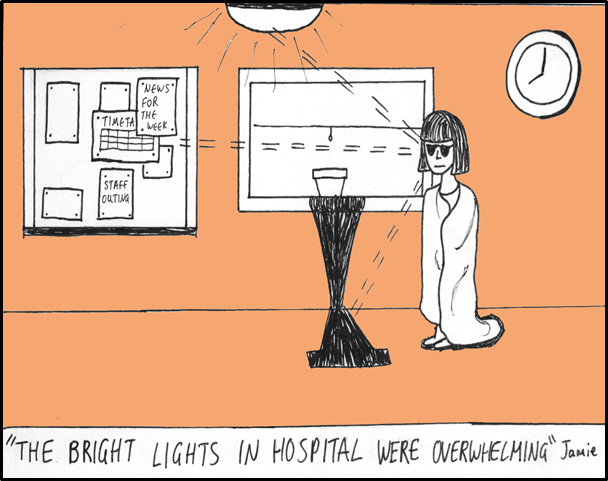Sensory Friendly LED Lighting for Healthcare Environments

NDTi’s autism team collaborated with Buro Happold’s Inclusive Design and Lighting Teams, and the Assistive Technology team within the CAMHS Mental Health taskforce to develop guidance for sensory friendly LED lighting. It is technical and detailed, and is intended for architects, building developers, and estates managements teams.
You can view the guidance in the ‘related downloads’ section on the right of this page
Over a period of three years we worked with service providers, architects, housing developers and hospitals to support improvements to be made to sensory environments. The team is autistic led and the work is based on lived experience of sensory and social processing differences. The aim of the work is to support broader understanding of autism, autism informed approaches, and to improve sensory environments to support autistic flourishing.,
As this work developed, the team were commissioned by the CAMHS Mental Health Quality Improvement Taskforce to write the ‘It’s Not Rocket Science’ report. This report makes suggestions for changes inpatient services can make to environments and to the culture and approach of teams, to better support autistic people.
In addition to this work, the team were commissioned by NHS England National Autism Team to develop ‘Sensory Friendly Ward Principles’. These principles were based in the work started as part of the It’s Not Rocket Science Report and were further checked and challenged by autistic adults.
Recommendation eight of the sensory friendly ward principles is to: Change all fluorescent lighting for alternatives (as these were identified as being most problematic for autistic people with sensory sensitivities).
A subsequent visit to a CAMHS Mental Health inpatient hospital that had installed LED lighting illustrated to the team that LED lighting can be as harmful to autistic people with light sensitivity as fluorescent bulbs if appropriate adjustments are not made when they are installed. After further enquiry, we realised that there was a gap in guidance about the quality, standards and impact of LED lighting.
This guidance has been developed on a voluntary basis and not been peer reviewed.
(Image credit to Sam Chown-Ahern - From 'It's Not Rocket Science' report)
News Sign-up
Contact Details
Contact NDTi
Email: office@ndti.org.uk
Contact Office
Bath (Registered Office)
National Development Team for Inclusion
4 Queen Street
Bath
BA1 1HE